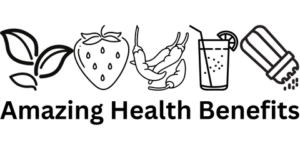Polonaise sauce is a warm mix of butter, chopped hard‑boiled eggs, breadcrumbs, and bright herbs.
People pour it over cooked vegetables like cauliflower or asparagus to add taste and crunch.
Even though it feels rich, each part can give the body useful nutrients when eaten in small amounts.
We’ll explain how those parts work together to help health.
It also shows easy ways to make the sauce fit different diets.
1. Healthy Fats From Butter
A small part of butter gives the body fat that it can quickly turn into energy.
These fats help move vitamins A, D, E, and K from food into the bloodstream, where they are needed.
Grass‑fed butter also brings tiny amounts of omega‑3 fatty acids that support brain and heart cells.
Using just a spoonful keeps total saturated fat low while still adding creamy flavor.
Swapping in half olive oil can further boost the balance of good fats.
📙 Potential Health Benefits of Chilli Soy Lime
2. Protein And Nutrients From Hard‑Boiled Eggs
Eggs supply complete protein with all nine essential amino acids that help build muscle and repair tissue.
Each egg also carries vitamin B12 and choline, which support nerve signaling and memory.
The yellow yolk adds selenium that works with enzymes to protect cells.
Including eggs in the sauce means you get these benefits without having to cook an extra dish.
Chopping the eggs finely lets them blend through the sauce for even bites.
📙 Potential Health Benefits of Banana Ketchup
3. Antioxidant‑Rich Fresh Herbs
Parsley, dill, or chives bring color and a fresh scent while packing plant compounds that block harmful free radicals.
These herbs are low in calories yet high in vitamin C, giving the immune system a gentle lift.
Cutting herbs right before serving keeps their oils and taste strong.
Even a small handful can raise the antioxidant level of the whole plate.
Growing a pot on the windowsill makes it easy to add herbs every time.
📙 Potential Health Benefits of Ocopa
4. Improved Absorption Of Fat‑Soluble Vitamins
Many bright‑colored vegetables store vitamins that only leave the plant walls when fat is present.
The butter in Polonaise sauce provides that fat, helping your body soak up vitamins A for eyesight, D for bones, E for skin, and K for clotting.
Studies show that eating carrots with fat triples vitamin A uptake compared with eating them plain.
This means a drizzle can make steamed veggies far more useful to the body.
Children who avoid oils may gain more nutrition when the sauce is on the table.
📙 Potential Health Benefits of Joppie Sauce
5. Dietary Fiber From Breadcrumbs
Whole‑grain breadcrumbs add a gentle crunch plus fiber that keeps digestion smooth.
Fiber slows the rise of blood sugar after meals, giving longer‑lasting energy.
Using coarse crumbs or mixing in ground flaxseed can lift fiber grams even higher.
Because the crumbs toast in butter, their flavor deepens without needing extra salt.
Keeping the portion to a tablespoon still benefits texture and gut health.
📙 Potential Health Benefits of Fritessaus
6. Low Carbohydrate Content
Apart from a small scoop of breadcrumbs, the sauce is mostly protein and fat, so total carbs stay low.
This can help people who track carbs for blood sugar control or weight goals.
Replacing crumbs with crushed nuts or skipping them entirely drops carbs even more.
The sauce adds flavor without hidden sugars often found in ready‑made dressings.
It lets vegetable dishes stay filling yet light on starch.
📙 Potential Health Benefits of Xnipek
7. Heart‑Healthy Fats In Moderation
Eating butter in moderation can fit into a heart‑smart plan, especially when paired with unsaturated oils.
Mixing in a little olive or avocado oil cuts the ratio of saturated to heart‑friendly fat.
This balance may support healthy cholesterol levels over time.
Choosing smaller servings, such as two teaspoons per person, keeps total fat reasonable.
Flavor remains full while the heart stays protected.
📙 Potential Health Benefits of Salsa Macha
8. Enhanced Flavor Encouraging Vegetable Intake
Rich taste and a bit of crunch make plain greens seem special, motivating kids and adults to eat more produce.
More vegetables mean more vitamins, minerals, and plant compounds throughout the day.
A tasty topping can turn a side dish into the star of the meal without extra cost.
Because the sauce is quick, it helps busy families cook at home instead of ordering fried sides.
Over weeks, higher veggie intake can support weight control and overall health.
📙 Potential Wellness Advantages of Various Sauces You Should Know
9. Vitamins And Minerals From Eggs And Herbs
Egg yolks carry vitamin D for strong bones and iron that moves oxygen in the blood.
Herbs contribute vitamin K, which helps wounds close, and magnesium, which keeps muscles steady.
Blending these foods in one sauce brings a mix of key nutrients in every bite.
This mix supports energy, immunity, and growth in children.
It is a simple way to layer nutrients without pills.
📙 Potential Major Health Perks
10. Customizable For Added Probiotics And Healthier Fats
Cooks can swap standard butter for fermented ghee or yogurt butter to add live cultures that aid gut balance.
Replacing half the butter with extra‑virgin olive oil raises heart‑friendly fat, linked to lower heart risk.
Breadcrumbs can be made from high‑fiber sprouted bread or even almond meal for gluten‑free needs.
Extra herbs or a squeeze of lemon adjust flavor without extra calories.
These tweaks make the sauce fit many eating plans.
💡 Conclusion
Polonaise sauce shows that even a classic garnish can boost health when built thoughtfully.
Its mix of fat, protein, fiber, and antioxidants works together to nourish the body and lift flavor.
Using quality ingredients and mindful portions keeps the benefits while limiting excess calories.
Simple swaps like olive oil or whole‑grain crumbs let each family meet their own goals.
Adding this sauce to steamed vegetables turns a plain side into a nutrient‑rich highlight.
⛑️ Safety First
Polonaise sauce can be healthy for many people, but not everyone should eat it.
People with high cholesterol, egg allergies, or certain heart problems may need to avoid it or limit how much they eat.
The benefits mentioned are possible, not guaranteed, and some come from personal stories or ideas, not strong studies.
It’s smart to ask a doctor before adding it to your meals often, especially if you have a health condition.
Always check facts and get advice from a health expert before making changes to your diet.
⚠️ Content Disclaimer
This article is for general information and should not be taken as medical advice.
You may treat it as something made for entertainment or learning, not as a guide for your health.
Everyone’s body is different, and what works for one person may not work for another.
Always talk to a doctor or health expert before making any big changes to your diet.
The writers are not responsible for how you use the information in this article.

